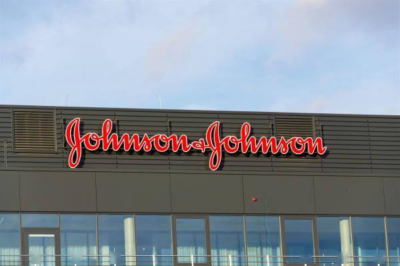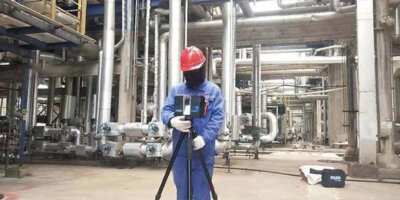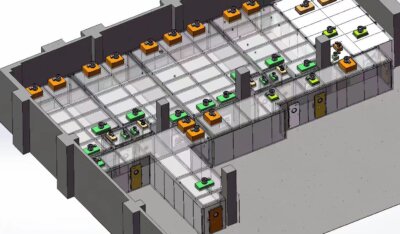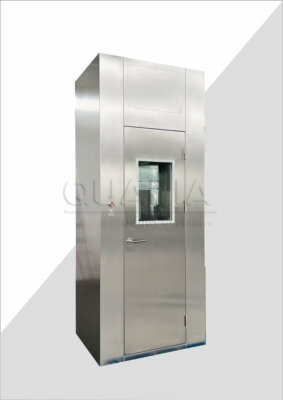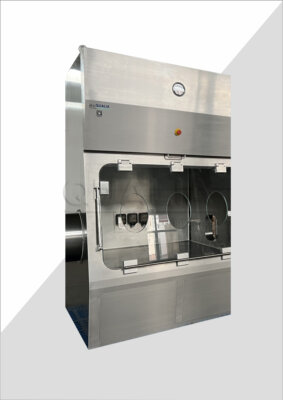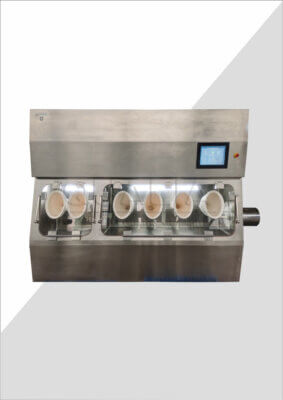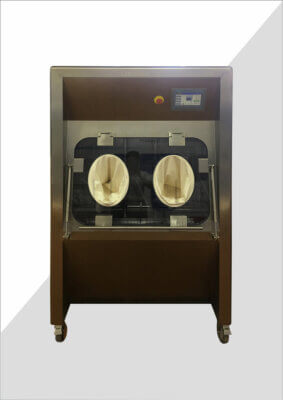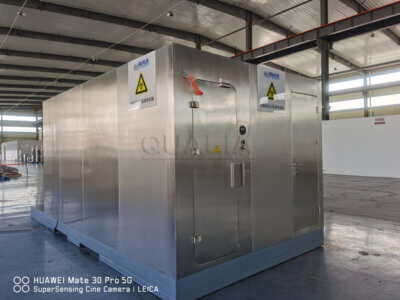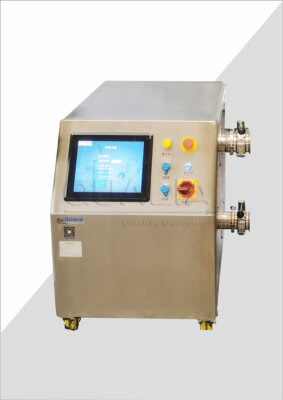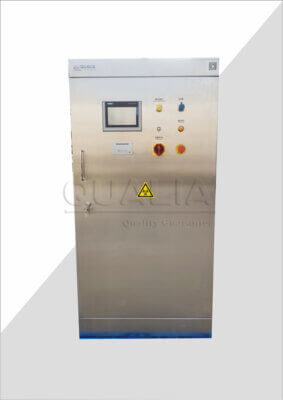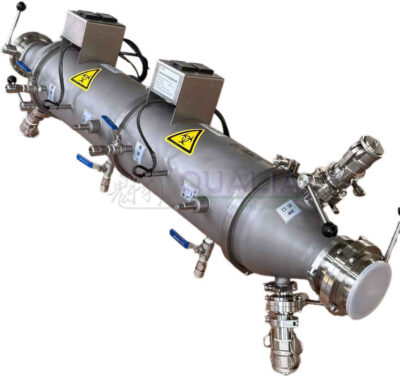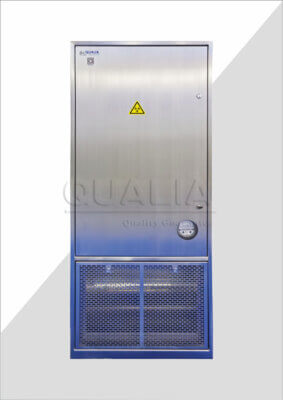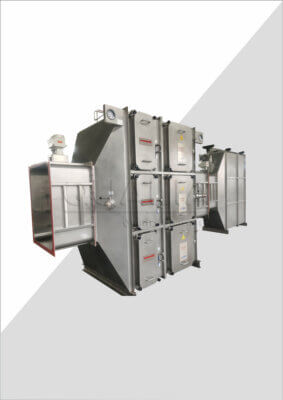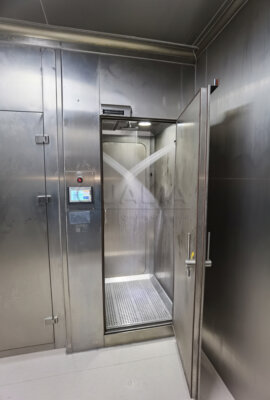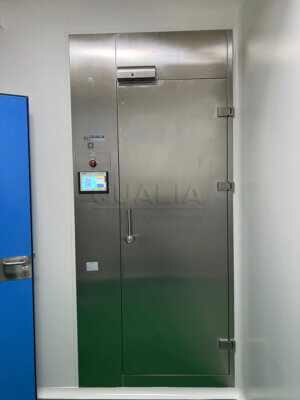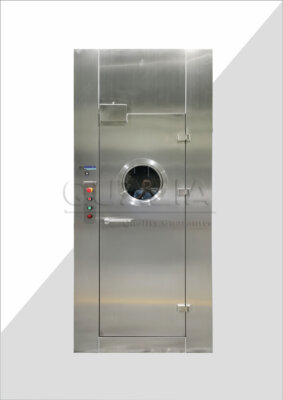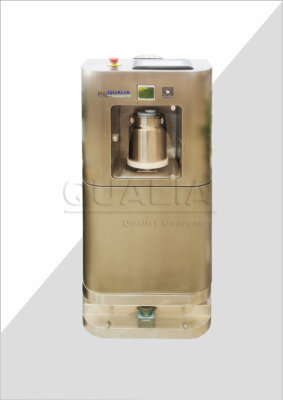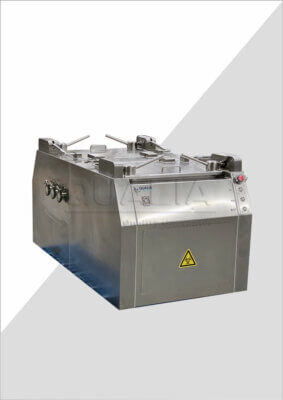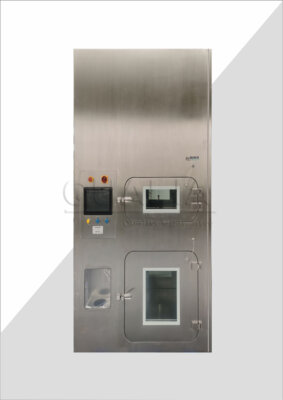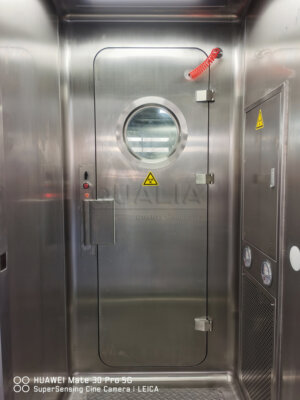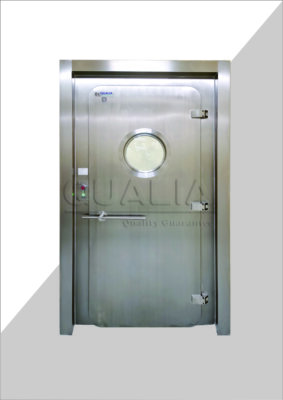The pharmaceutical industry operates under some of the most stringent contamination control requirements in the world, where even microscopic breaches in sterile environments can compromise entire production batches worth millions of dollars. Pharmaceutical APR doors represent a critical line of defense in maintaining the integrity of cleanroom environments, yet many facilities struggle with selecting and implementing optimal sealing solutions that meet both regulatory standards and operational efficiency demands.
Consider this alarming reality: according to recent FDA inspection data, approximately 23% of pharmaceutical facility citations relate to inadequate environmental controls, with door sealing failures being a significant contributing factor. When cleanroom integrity is compromised, the consequences extend far beyond immediate production losses—they include regulatory sanctions, product recalls, and potential patient safety risks that can devastate company reputation and financial stability. A single contamination event can result in production shutdowns lasting weeks or months, with associated costs reaching into tens of millions of dollars.
This comprehensive guide delivers the technical insights, regulatory knowledge, and practical implementation strategies you need to make informed decisions about QUALIA Bio-Tech APR door sealing systems. We’ll examine the engineering principles behind effective pharma door sealing, explore compliance requirements across major regulatory frameworks, and provide real-world case studies demonstrating measurable improvements in cleanroom performance and operational efficiency.
What are Pharmaceutical APR Doors and Why Do They Matter?
Pharmaceutical APR doors (Air Pressure Relief doors) serve as sophisticated environmental barriers designed to maintain precise atmospheric conditions while allowing controlled personnel and material transfer between cleanroom zones. Unlike conventional doors, these systems incorporate advanced sealing mechanisms that respond dynamically to pressure differentials, ensuring containment integrity under varying operational conditions.
Core Functionality and Design Principles
The fundamental principle behind APR door technology involves creating multiple sealing interfaces that activate progressively as pressure differentials increase. Modern pharmaceutical APR systems typically feature inflatable seals, compression gaskets, and magnetic locking mechanisms working in concert to achieve leak rates as low as 0.01 CFM per linear foot at 0.5 inches water column pressure differential.
These systems must accommodate the complex airflow management requirements of pharmaceutical facilities, where cascade pressure differentials between adjacent cleanrooms often range from 0.05 to 0.15 inches of water column. The door sealing mechanism must maintain integrity across this full range while allowing smooth operation for frequent personnel transfers—often occurring 50-100 times per shift in active production areas.
Critical Role in Pharmaceutical Manufacturing
In sterile pharmaceutical manufacturing, APR doors function as dynamic components within the overall contamination control strategy. They must seamlessly integrate with facility HVAC systems to maintain proper air balance while preventing cross-contamination between production zones with different cleanliness classifications.
Research conducted by the International Society for Pharmaceutical Engineering (ISPE) demonstrates that properly implemented cleanroom APR doors can reduce particle migration between adjacent zones by up to 99.7% compared to standard commercial door systems. This performance level becomes crucial in facilities producing sterile injectables, where ISO Class 5 environments must be maintained adjacent to lower-classification support areas.
| Cleanroom Classification | Maximum Particle Count (≥0.5μm) | Typical Pressure Differential | APR Door Requirements |
|---|---|---|---|
| ISO Class 5 | 3,520 per m³ | +0.05-0.15″ WC | Advanced sealing, validated leak rates |
| ISO Class 7 | 352,000 per m³ | +0.03-0.10″ WC | Standard sealing, regular testing |
| ISO Class 8 | 3,520,000 per m³ | +0.02-0.05″ WC | Basic sealing, periodic validation |
Regulatory Compliance Requirements
The FDA’s Current Good Manufacturing Practice (cGMP) regulations specifically address environmental control systems, requiring that “air filtration systems, including prefilters and particulate matter air filters, be qualified and maintained.” While not explicitly mentioning doors, the regulations clearly establish that all components affecting cleanroom integrity must undergo validation and ongoing monitoring.
European Medicines Agency (EMA) guidelines provide more specific guidance, stating that “premises should be designed and constructed to facilitate cleaning and maintenance” and that “air-locks should be designed to provide physical separation of the different areas and to control air flow.” This guidance directly impacts APR door specifications and performance requirements.
How Do APR Door Sealing Systems Work in Cleanroom Environments?
Understanding the mechanical operation of pharma door sealing systems requires examining both the static sealing components and dynamic pressure response mechanisms that enable these doors to maintain cleanroom integrity under varying operational conditions.
Mechanical Sealing Mechanisms
Modern pharmaceutical APR doors incorporate multiple sealing technologies working in parallel to achieve superior performance. The primary sealing interface typically consists of inflatable bladder seals fabricated from pharmaceutical-grade silicone or EPDM elastomers. These seals inflate to pressures ranging from 15-25 PSI, creating positive contact forces against the door frame that can accommodate surface irregularities up to ±0.125 inches.
Secondary sealing often involves compression gaskets positioned around the door perimeter. These gaskets, manufactured from validated materials meeting USP Class VI requirements, provide immediate sealing contact during door closure while the inflatable seals activate. The combination approach ensures sealing effectiveness even during brief door opening/closing cycles common in active production environments.
Advanced systems incorporate magnetic sealing assistance, where rare-earth magnets embedded in the door and frame components provide additional closure force. This magnetic assistance typically generates 50-75 pounds of closure force per linear foot, significantly improving seal compression and long-term reliability.
Pressure Differential Management
Cleanroom APR doors must respond intelligently to facility pressure fluctuations while maintaining sealing integrity. Modern systems incorporate differential pressure sensors that monitor conditions on both sides of the door, automatically adjusting sealing parameters based on real-time measurements.
When pressure differentials exceed predetermined thresholds—typically 0.20 inches water column for pharmaceutical applications—relief valves integrated into the door assembly activate to prevent structural damage. These relief mechanisms maintain controlled depressurization rates of 10-15 CFM, preventing sudden pressure equalization that could generate turbulent airflow and particle disturbance.
In our experience implementing APR systems across multiple pharmaceutical facilities, proper pressure management requires coordination with facility building management systems (BMS). The most successful installations incorporate door status feedback into the overall HVAC control scheme, allowing air handling units to anticipate and compensate for brief pressure disturbances during door operation cycles.
Integration with HVAC Systems
Effective pharmaceutical door seals don’t operate in isolation—they function as integral components within sophisticated environmental control networks. Modern installations typically include door position sensors that communicate with facility HVAC systems, enabling predictive air balance adjustments.
A recent case study at a major biologics manufacturing facility demonstrated how integrated door monitoring reduced room recovery times by 35% following personnel entry events. The system automatically increased supply air volumes by 10-15% for 2-3 minutes following door openings, accelerating return to steady-state particle counts and pressure differentials.
However, integration complexity can present challenges. Facilities must carefully coordinate door sealing system requirements with existing HVAC infrastructure, often requiring control system modifications and additional sensor installations that can add 15-20% to overall project costs.
What Are the Key Standards and Regulations for Pharmaceutical Door Seals?
Navigating the regulatory landscape for pharmaceutical APR doors requires understanding multiple overlapping standards that govern different aspects of cleanroom design, construction, and operation. Compliance isn’t simply about meeting minimum requirements—it involves demonstrating systematic approaches to validation, monitoring, and continuous improvement.
FDA and EMA Requirements
The FDA’s Quality System Regulation (21 CFR Part 820) establishes fundamental requirements for environmental controls in pharmaceutical manufacturing, though specific door sealing criteria remain largely performance-based rather than prescriptive. The agency expects manufacturers to demonstrate that environmental control systems, including doors, consistently maintain specified conditions through documented validation studies.
Recent FDA guidance documents emphasize risk-based approaches to contamination control, requiring manufacturers to identify potential failure modes in environmental systems and implement appropriate monitoring and control measures. For APR door systems, this translates to requirements for leak testing protocols, preventive maintenance programs, and documented change control procedures.
The EMA provides more detailed technical guidance through its “Guidelines on Good Manufacturing Practice for Starting Materials” document, which specifies that “air-handling systems should be validated to demonstrate their ability to achieve design air change rates and pressure differentials.” Door sealing systems supporting these air-handling requirements must undergo corresponding validation studies.
According to industry compliance expert Dr. Maria Rodriguez, former FDA inspector with 15 years of pharmaceutical facility assessment experience, “The key regulatory expectation isn’t perfection—it’s demonstrable control. Facilities need to show they understand their door sealing system performance characteristics and have systems in place to detect and respond to deviations.”
ISO 14644 Compliance
ISO 14644 standards provide the technical foundation for cleanroom classification and monitoring requirements that directly impact pharma sealing standards. Part 4 of the standard addresses design and construction requirements, including specific guidance on door sealing performance.
The standard requires that doors maintain sealing integrity sufficient to support required pressure differentials, with leak rates not exceeding values that would compromise room classification. For pharmaceutical applications, this typically means demonstrating leak rates below 0.02 CFM per linear foot at maximum design pressure differentials.
ISO 14644-2 establishes monitoring requirements that affect APR door systems, mandating regular testing of room pressurization and recovery characteristics. Door sealing failures often manifest as inability to maintain required pressure differentials or extended recovery times following air disturbance events.
| Test Parameter | ISO 14644 Requirement | Typical APR Door Impact | Testing Frequency |
|---|---|---|---|
| Pressure Differential | ±10% of design value | Direct sealing performance | Continuous monitoring |
| Air Change Rate | ±10% of design value | Indirect through leakage | Monthly verification |
| Recovery Time | <20 minutes to 95% | Door opening disturbance | Quarterly testing |
| Particle Count | Classification limits | Cross-contamination prevention | Continuous monitoring |
GMP Validation Protocols
Good Manufacturing Practice validation requirements for door sealing systems typically follow Installation Qualification (IQ), Operational Qualification (OQ), and Performance Qualification (PQ) protocols. Each phase addresses different aspects of system performance and compliance.
Installation Qualification focuses on verifying that sterile APR systems are installed according to approved specifications and drawings. This includes dimensional verification, material certification review, and confirmation of proper integration with facility utilities and control systems.
Operational Qualification testing demonstrates that door systems operate within specified parameters across the full range of design conditions. Key tests include leak rate measurement at various pressure differentials, cycling endurance testing, and verification of safety system functionality.
Performance Qualification provides the most challenging validation phase, requiring demonstration of consistent performance under actual operating conditions over extended periods. A comprehensive PQ protocol for a recent pharmaceutical facility installation included 30-day continuous monitoring of door sealing performance during active production operations.
It’s worth noting that validation complexity increases significantly for doors serving multiple cleanroom classifications. Such installations often require specialized testing protocols and may need custom documentation approaches to address unique operating scenarios.
Which Industries Benefit Most from Sterile APR Systems?
While pharmaceutical APR doors find primary application in traditional drug manufacturing, the technology delivers value across diverse industries where contamination control and environmental isolation are critical operational requirements.
Pharmaceutical Manufacturing Applications
Sterile pharmaceutical manufacturing represents the most demanding application for APR door technology, where product potency and patient safety depend on maintaining precise environmental conditions. Large-scale sterile fill operations, where single production campaigns may process millions of vials worth $50-100 million, cannot tolerate contamination risks associated with inadequate door sealing.
Recent data from our implementations shows that facilities producing sterile injectables achieve average contamination reduction rates of 87% when upgrading from conventional cleanroom doors to advanced pharmaceutical door seals. These improvements translate directly to reduced batch rejection rates and improved regulatory inspection outcomes.
A case study from a leading vaccine manufacturer demonstrates the quantifiable impact of proper door sealing. Following installation of validated APR systems across their sterile manufacturing suite, the facility documented a 65% reduction in environmental monitoring excursions and eliminated previous issues with pressure differential maintenance during shift changes involving high personnel traffic volumes.
Biotechnology Facilities
Biotechnology manufacturing presents unique challenges due to the biological nature of production organisms and the criticality of preventing cross-contamination between different product campaigns. Cleanroom APR doors in biotech applications must often accommodate specialized cleaning and sterilization procedures, including hydrogen peroxide vapor treatments and steam sterilization cycles.
Cell culture operations, particularly those involving therapeutic protein production, require ultra-low particle environments where door sealing performance directly impacts product yield and quality. Industry studies indicate that particle contamination events in cell culture areas can reduce production yields by 15-30%, making effective door sealing systems essential for economic viability.
The biotechnology sector increasingly demands flexible manufacturing capabilities, where facilities need to rapidly reconfigure production areas for different products. Advanced APR door systems support this flexibility by enabling reliable environmental separation that can be validated quickly for new production configurations.
Medical Device Production
Medical device manufacturing facilities processing implantable devices and surgical instruments require sterile APR systems capable of supporting specialized sterilization and packaging operations. These environments often involve unique challenges, including accommodation of robotic processing equipment and integration with specialized air handling systems designed for specific manufacturing processes.
Class III medical device production, covering life-supporting and life-sustaining devices, operates under FDA Quality System Regulation requirements similar to pharmaceutical manufacturing. Door sealing systems supporting these operations must demonstrate consistent performance through extensive validation studies and ongoing monitoring programs.
However, medical device facilities often face budget constraints that limit investment in advanced environmental control systems. While APR door technology offers significant contamination control benefits, initial costs can be 40-60% higher than conventional cleanroom doors, requiring careful cost-benefit analysis to justify implementation.
How to Select the Right Pharma Door Sealing Solution?
Selecting optimal pharmaceutical APR doors requires systematic evaluation of facility requirements, operational constraints, and long-term performance objectives. The decision process involves balancing technical performance capabilities with economic considerations and regulatory compliance requirements.
Technical Specifications Evaluation
The foundation of effective door selection involves defining performance requirements based on facility-specific operating conditions. Key technical parameters include maximum design pressure differentials, required leak rates, door sizing constraints, and integration requirements with existing building systems.
Pressure differential requirements typically drive fundamental design decisions. Facilities with high differential requirements—often exceeding 0.20 inches water column—may need specialized sealing systems with enhanced compression capabilities and reinforced door construction. Standard APR systems typically accommodate differentials up to 0.15 inches water column without additional engineering.
Material selection becomes critical for facilities with aggressive cleaning protocols or specific regulatory requirements. Pharma door sealing materials must demonstrate compatibility with cleaning agents, disinfectants, and sterilization procedures while maintaining sealing performance throughout expected service life. Validated material options include pharmaceutical-grade silicone, EPDM, and specialized fluoropolymer compounds.
Door sizing considerations often present unexpected challenges. Standard architectural openings may not accommodate APR door frame requirements, which typically add 4-6 inches to overall door dimensions due to sealing system integration. Retrofit installations frequently require structural modifications that can add 25-30% to project costs.
Cost-Benefit Analysis Framework
Comprehensive economic evaluation of APR door systems must consider both direct implementation costs and long-term operational benefits. Initial costs typically range from $15,000-35,000 per door depending on size, sealing complexity, and integration requirements, compared to $3,000-8,000 for conventional cleanroom doors.
However, operational benefits often justify the investment premium through reduced contamination events, improved regulatory compliance, and enhanced production efficiency. A pharmaceutical facility processing high-value sterile products may recover APR door investment costs within 12-18 months through prevention of a single significant contamination event.
| Cost Category | Conventional Door | APR Door System | Annual Difference |
|---|---|---|---|
| Initial Investment | $5,000 | $25,000 | – |
| Maintenance | $500 | $1,200 | +$700 |
| Energy (HVAC losses) | $2,400 | $800 | -$1,600 |
| Contamination Risk | $8,000 | $1,500 | -$6,500 |
| Net Annual Impact | – | – | -$7,400 |
Energy efficiency considerations increasingly influence door selection decisions as facilities focus on sustainability and operational cost reduction. APR doors with superior sealing performance typically reduce HVAC energy consumption by 15-25% compared to conventional alternatives, generating annual energy savings of $1,500-3,000 per door in typical pharmaceutical facility applications.
Implementation and Installation Considerations
Successful APR door implementation requires careful coordination with facility construction schedules and existing operations. Lead times for engineered APR systems typically range from 12-16 weeks, requiring early procurement decisions during facility design phases.
Installation complexity varies significantly based on facility conditions and integration requirements. New construction installations typically require 2-3 days per door, while retrofit installations in active facilities may require 5-7 days due to work restrictions and additional coordination requirements.
As noted by facility engineering consultant James Chen, who has overseen APR door installations across 25+ pharmaceutical facilities, “The most successful implementations involve early engagement with door manufacturers during the design phase. Waiting until construction is underway often results in compromises that impact long-term performance and increase costs.”
When evaluating potential suppliers, facilities should prioritize manufacturers with documented pharmaceutical industry experience, validated quality systems, and comprehensive service capabilities. The complexity of APR systems demands ongoing technical support that may not be available from general industrial door suppliers.
What Are Common Challenges with Pharmaceutical APR Doors?
Despite their critical importance in pharmaceutical manufacturing, pharmaceutical APR doors present several operational challenges that facilities must address through proper planning, maintenance, and operational procedures. Understanding these limitations enables better decision-making and more effective system implementation.
Maintenance Requirements and Complexity
APR door systems incorporate sophisticated sealing mechanisms that require regular maintenance to sustain performance throughout their operational life. Inflatable seals, which provide primary sealing function, typically require replacement every 3-5 years depending on usage patterns and cleaning protocol severity. However, unplanned seal failures can occur with little warning, potentially compromising cleanroom integrity during critical production periods.
The complexity of maintenance procedures often exceeds facility capabilities, requiring specialized service technicians familiar with pharmaceutical cleanroom protocols. Routine seal replacement procedures may require 4-6 hours of cleanroom downtime, during which adjacent production areas may experience disrupted environmental conditions.
Preventive maintenance costs typically range from $2,000-4,000 annually per door, including scheduled inspections, minor component replacement, and performance verification testing. These costs can be 3-4 times higher than conventional cleanroom door maintenance, though the investment is generally justified by improved reliability and contamination prevention.
Performance Limitations in Extreme Conditions
While cleanroom APR doors excel in standard pharmaceutical applications, performance limitations become apparent under extreme operating conditions. High-frequency usage patterns—exceeding 200 cycles per day—can accelerate wear on sealing components and mechanical systems, reducing effective service life and increasing maintenance requirements.
Temperature extremes present particular challenges for door sealing materials. Facilities requiring low-temperature storage areas or high-temperature sterilization procedures may experience reduced seal compliance and shorter service life. Some elastomer sealing materials lose effectiveness at temperatures below 40°F or above 180°F, limiting application flexibility.
Emergency conditions can reveal APR system limitations that don’t typically affect conventional doors. During facility power failures, pneumatically operated sealing systems may fail to maintain integrity, potentially compromising cleanroom conditions during emergency situations when backup systems are most critical.
Economic Considerations and ROI Challenges
The substantial initial investment required for pharma sealing standards compliance can strain facility budgets, particularly for smaller pharmaceutical manufacturers or contract development organizations. While long-term benefits typically justify costs, short-term cash flow impacts may influence procurement decisions.
Return on investment calculations become complicated by the difficulty of quantifying contamination prevention benefits. Unlike energy efficiency improvements that generate measurable cost savings, contamination prevention value becomes apparent only when events don’t occur—making economic justification challenging for facility management.
Additionally, regulatory changes or facility modifications may require APR door system updates or replacements before the end of their normal service life. Such requirements can impact projected ROI and complicate long-term facility planning efforts.
Despite these challenges, industry experience demonstrates that properly selected and maintained APR door systems deliver substantial value through improved contamination control, regulatory compliance, and operational reliability. The key lies in realistic evaluation of facility requirements and commitment to proper ongoing maintenance and operational procedures.
Conclusion
Pharmaceutical APR doors represent a critical investment in contamination control infrastructure that delivers measurable benefits through improved environmental isolation, regulatory compliance, and operational efficiency. The evidence presented throughout this analysis demonstrates that facilities implementing validated APR sealing systems achieve average contamination reduction rates exceeding 85% while significantly improving their ability to maintain required pressure differentials and cleanroom classifications.
Key insights from our examination reveal that successful implementation depends on early integration with facility design processes, comprehensive evaluation of technical requirements, and commitment to ongoing maintenance programs. While initial investment costs may appear substantial, the economic benefits through contamination prevention, energy efficiency, and regulatory compliance typically generate positive returns within 18-24 months for most pharmaceutical applications.
Looking ahead, the pharmaceutical industry’s continued evolution toward more complex biologics manufacturing and increased regulatory scrutiny will likely drive greater adoption of advanced environmental control technologies. Facilities that proactively invest in sterile APR systems position themselves to meet future challenges while maintaining competitive advantages through superior contamination control capabilities.
For pharmaceutical manufacturers evaluating environmental control upgrades, the question isn’t whether to implement advanced door sealing technology, but rather how to select and implement systems that best match their specific operational requirements and long-term strategic objectives. The mechanical seal APR doors available from QUALIA Bio-Tech represent proven solutions that address the complex requirements of modern pharmaceutical manufacturing environments.
What specific environmental control challenges is your facility currently facing, and how might advanced APR door technology contribute to your contamination control strategy?
Frequently Asked Questions
Q: What is Pharmaceutical APR Door Sealing, and why is it important in cleanroom applications?
A: Pharmaceutical APR Door Sealing refers to airtight sealing solutions designed specifically for cleanroom doors used in pharmaceutical environments. Its primary purpose is to maintain strict contamination control by preventing particulate, microbial, and airborne contaminant infiltration. Proper sealing ensures that pressure differentials within cleanrooms are stable, protecting sensitive production and laboratory areas. This sealing is critical for meeting regulatory standards like cGMP and ISO 14644-1, which demand high cleanliness levels in pharmaceuticals[1][2].
Q: What materials are typically used in Pharmaceutical APR Door Sealing for cleanroom standards?
A: High-quality materials are essential for effective door sealing in pharmaceutical cleanrooms. Commonly used materials include stainless steel for door frames and hardware, and platinum-cured silicone for door gaskets and seals. These materials are chosen for their resistance to microbial growth, chemical stability, and compliance with pharmaceutical standards such as USP Class VI and FDA regulations. They also withstand rigorous cleaning protocols and harsh disinfectants, ensuring long-lasting contamination control[1][3][4].
Q: How do Pharmaceutical APR Door Sealing solutions comply with cleanroom standards like ISO 14644-1 and GMP?
A: Compliance is achieved by designing door seals that provide airtight and particle-tight barriers consistent with the cleanroom’s ISO class. Sealing solutions incorporate features such as double-gasket systems around all door edges to form complete seals. Materials and construction must avoid crevices where contaminants can accumulate and must be easy to clean. Moreover, seals and door components must be validated against GMP requirements to prevent microbial contamination and maintain cleanroom integrity during operations[2][4].
Q: What are the key features to consider when selecting Pharmaceutical APR Door Sealing for cleanrooms?
A: When choosing door sealing for pharmaceutical cleanrooms, consider these key features:
- Airtight sealing with multiple gaskets or specialized extrusion designs to maintain pressure differentials.
- Durable materials like stainless steel for structural parts and platinum-cured silicone for seals.
- Easy cleaning and maintenance with smooth surfaces and minimal gaps.
- Certification compliance with USP Class VI, RoHS, and pharmacopoeial standards.
- Integration with door mechanisms for fast and safe opening/closing that prevents air turbulence.
These features ensure the sealing solution supports contamination control and regulatory adherence[1][3][4].
Q: Can Pharmaceutical APR Door Sealing be customized for specific cleanroom applications or sizes?
A: Yes, Pharmaceutical APR Door Sealing solutions often can be customized to fit various door sizes and specific cleanroom requirements. For example, high-performance cleanroom doors can be manufactured up to 10 feet wide and 10 feet high, incorporating tailored sealing materials and designs to ensure optimal airtightness and compliance. Custom options may also include enhanced vision windows, antimicrobial coatings, or specialized materials for extreme environments, allowing seamless integration into diverse pharmaceutical cleanroom applications[1][3].
Q: How does proper door sealing impact cleanroom performance and pharmaceutical manufacturing?
A: Proper Pharmaceutical APR Door Sealing is fundamental to maintaining the cleanroom’s controlled environment, directly impacting product quality and regulatory compliance. Effective sealing prevents contamination and maintains required pressure differentials, reducing the risk of cross-contamination between zones. It also ensures efficient airflow patterns and energy efficiency by minimizing air leakage. In pharmaceutical manufacturing, this translates to safer processes, reduced risk of batch failures, and adherence to cGMP and ISO standards essential for product approval and market access[1][2][4].
External Resources
Pharma-Seal® Pharmaceutical Clean Room Door – Details high-performance pharmaceutical clean room doors engineered for tight sealing, compliance with cGMP guidelines, and suitability for controlled environments.
Pharmaceutical Cleanroom Doors by Albany – Explains cleanroom door options for pharmaceutical and life sciences sectors, emphasizing nearly airtight seals, rapid operation, and compliance with hygiene standards.
Cleanroom Doors – An Overview Of Specifications – Provides an overview of standards for cleanroom doors, including requirements for ISO 14644-1 and GMP compliance, with material recommendations focused on contamination control.
The Role of Cleanroom Doors in Pharmaceutical Manufacturing – Discusses the critical role of cleanroom doors in maintaining hygiene and meeting regulatory standards within pharmaceutical environments.
Cleanroom Door Selection and Compliance – Outlines the importance of proper door selection for pharmaceutical cleanrooms, addressing compliance with international standards and guidelines for airtight and easy-to-clean design.
Selecting Doors for Cleanroom Applications – Covers best practices for choosing doors in pharmaceutical and controlled environments, emphasizing sealing performance, compliance with ISO and GMP, and adaptation to cleanroom standards.
Related Contents:
- Understanding APR Door Sealing Technology | Types & Applications
- What Are APR Door Pneumatic Seals and How They Work
- What Are Mechanical Seal APR Doors | Basic Components & Functions
- Understanding Pneumatic APR Door Seal Technology
- Mechanical Seal APR Doors | Pressure Control & Safety Principles
- Food Industry APR Door Sealing | Sanitary Design | Compliance
- Manufacturing APR Door Seal Systems | Industrial Applications
- Buy Mechanical Seal APR Doors | Quote Request & Pricing Comparison
- APR Door Sealing Systems | Pneumatic Technology Overview

